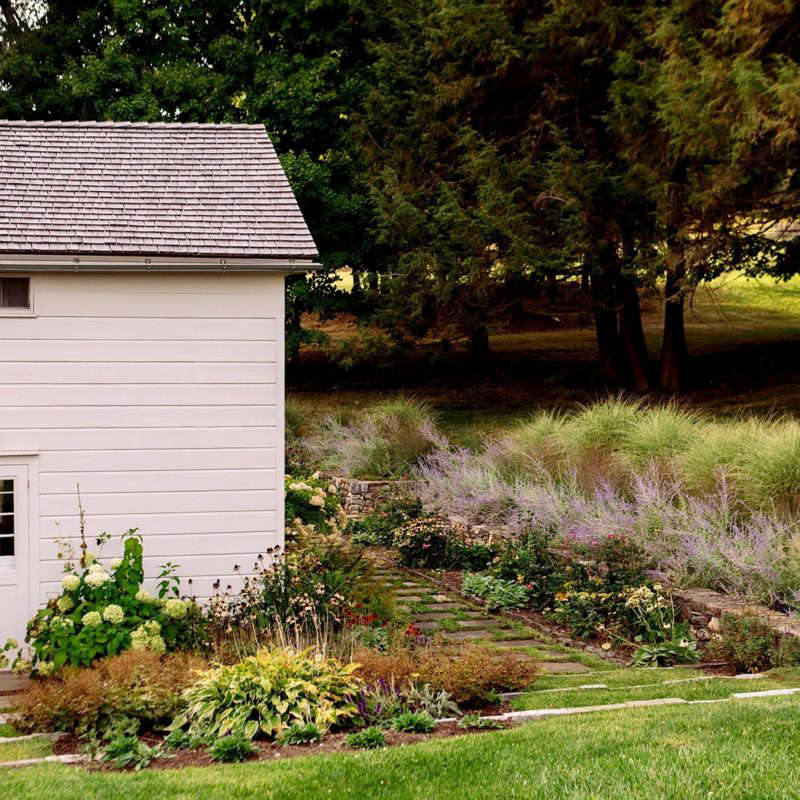

When a retaining wall does it job right, you may not even know it’s there. Think of retaining walls as support hose for sloped terrain: they hold everything in place. Discreetly.
“The most basic purpose of a retaining wall is to battle, and one hopes, win against gravity and the forces of nature,” writes our contributor Kier Holmes.
How do you know if your garden needs retaining walls? Ask yourself if your landscape could be improved if you had: more flat, usable land; a hillside terrace; less rainwater runoff, or more seating (low retaining walls can double as benches)?
The best materials to use to build retaining walls range from wood (generally the least expensive option) to poured concrete to stone. The material you select should complement the architectural style of the house and other hardscape elements. See the pros and cons of different materials at Hardscaping 101: Retaining Walls.
Building retaining walls is a project best left to professionals; in many cases, you will want an engineer’s report and the expert advice of a landscape architect or garden designer to guide the project. (Tip: Any wall higher than 3 feet generally needs a permit—check with local officials—and any wall higher than 5 feet needs a soils report to determine the depth of the posts).
v5.0
When you register as a free Member of the Remodelista family of websites (Remodelista, Gardenista, and The Organized Home), you gain access to all current posts plus 10 archived posts per month, our internal bookmarking tool, and the community bulletin board.
Member benefits include:
For $5/month ($59.99 paid annually) you'll enjoy unlimited, ad-free access to Remodelista, Gardenista, and The Organized Home and all the benefits of Membership.
Subscriber benefits include:
For $5/month ($59.99 paid annually) you'll enjoy unlimited, ad-free access to Remodelista, Gardenista, and The Organized Home and all the benefits of Membership.
Subscriber benefits include:
Benefits include:
For $5/month ($59.99 paid annually) you'll enjoy unlimited, ad-free access to Remodelista, Gardenista, and The Organized Home and all the benefits of Membership.
Subscriber benefits include:
When you register as a free Member of the Remodelista family of websites (Remodelista, Gardenista, and The Organized Home), you gain access to all current posts plus 10 archived posts per month, our internal bookmarking tool, and the community bulletin board.
Member benefits include:
If at any time you want to become a Subscriber and enjoy unlimited, ad-free access to all our content, just go to the My Account link and choose Subscribe.
Advertising funds our work at Gardenista and helps us provide you with a daily dose of garden inspiration & design. We hope you’ll consider disabling your adblocker for Gardenista so we can continue our mission: a well-designed garden for all.
Thank you for your support.